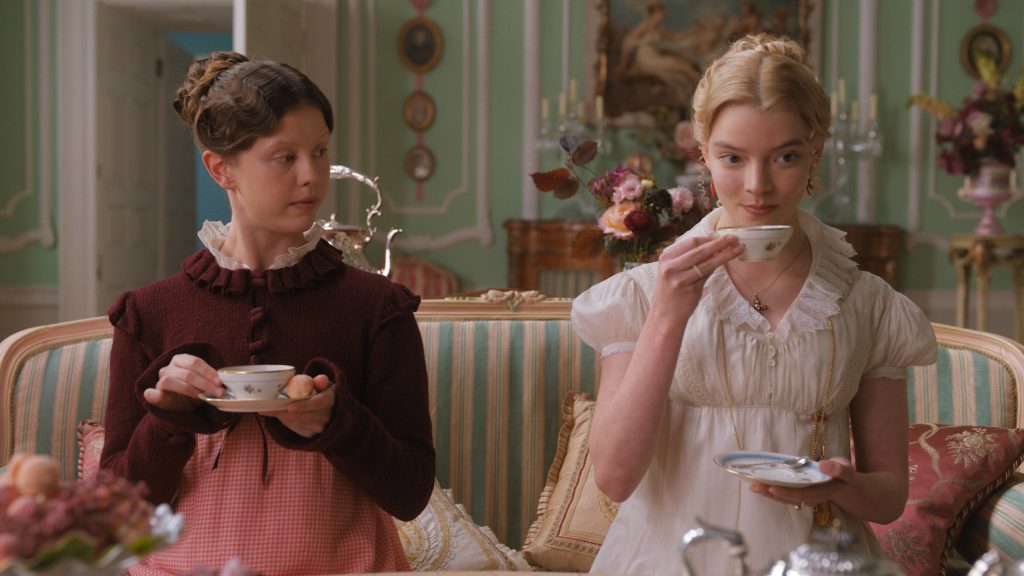
Someone online asked if we really needed another version of Jane Austen’s Emma but this one is the colorful, amusing, charming, and delicious version we didn’t know we needed. Time declared that it “strikes just the right balance of modern and authentic” and I have to agree.
Since my first post on Emma last week, A Look at the Emma Film Location Firle Place, I’ve gone down the Emma rabbit hole. I watched the 1996 version of Emma with Gwyneth Paltrow and the 2009 Masterpiece adaptation of Emma. The only version I didn’t watch yet is Clueless although I have seen it before. I started reading the Jane Austen novel and went back for a second screening of the film. I’ve watched interviews online, listened to a podcast, and even chatted with director Autumn de Wilde on Instagram. I now have new insight into the film and the other locations so I’m sharing them in this second post.
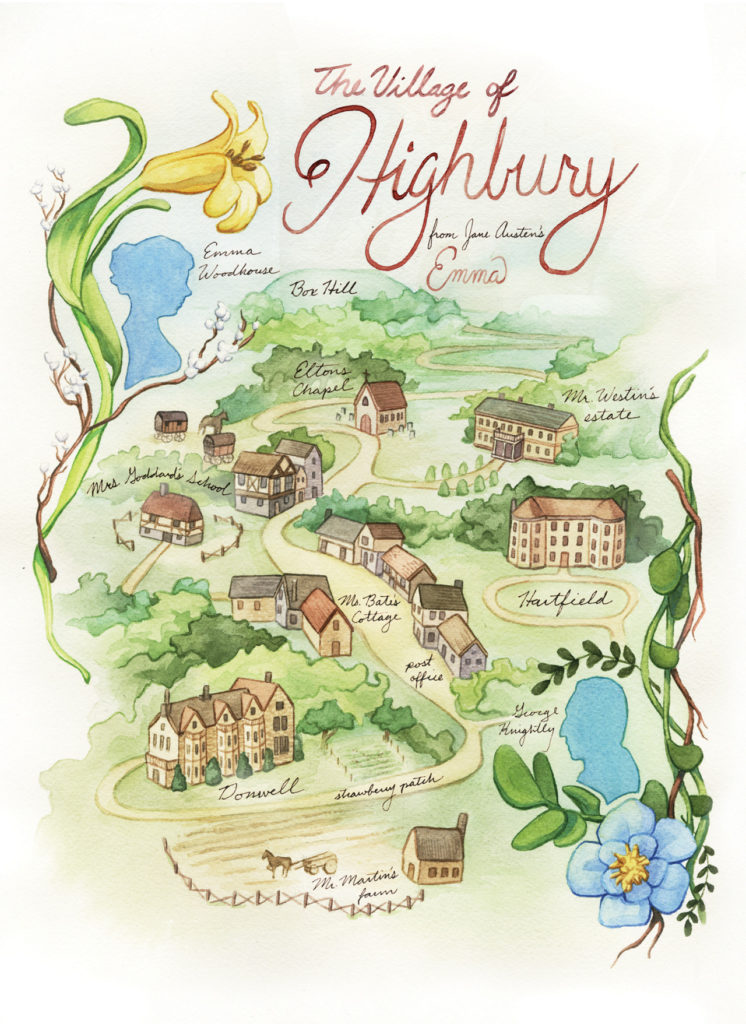
I came across this map of the fictional village of Highbury from Mary Grace Corpus that gives you an idea of the important homes in the book and movie. While Firle Place was chosen as Hartfield in Emma because it had never been used in another film, most of the other locations have been seen before in movies and on television and you might recognize some of them.
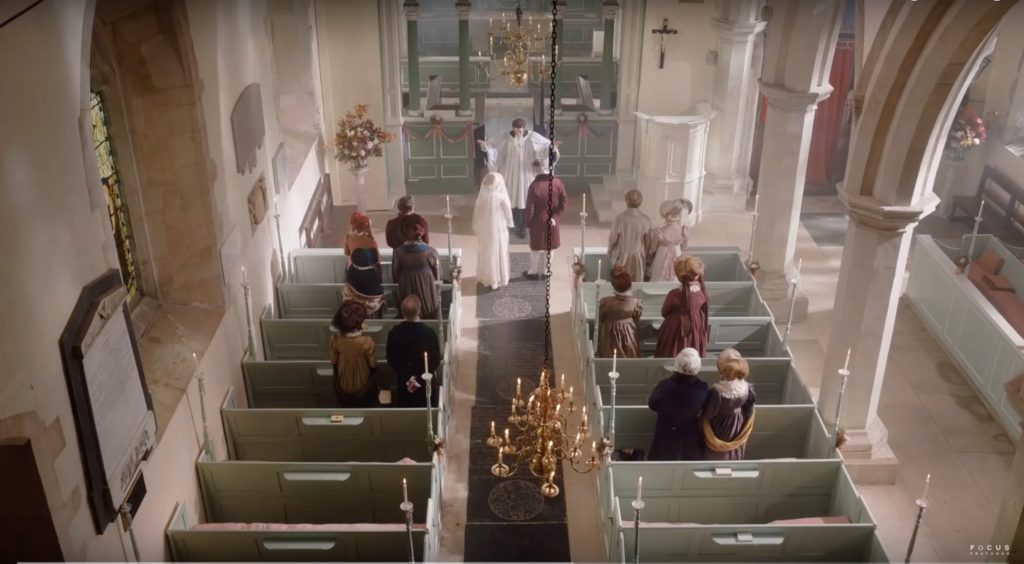
One of the first major scenes in the movie is the wedding of Emma’s governess Miss Taylor to Mr. Weston at the Highbury village church.
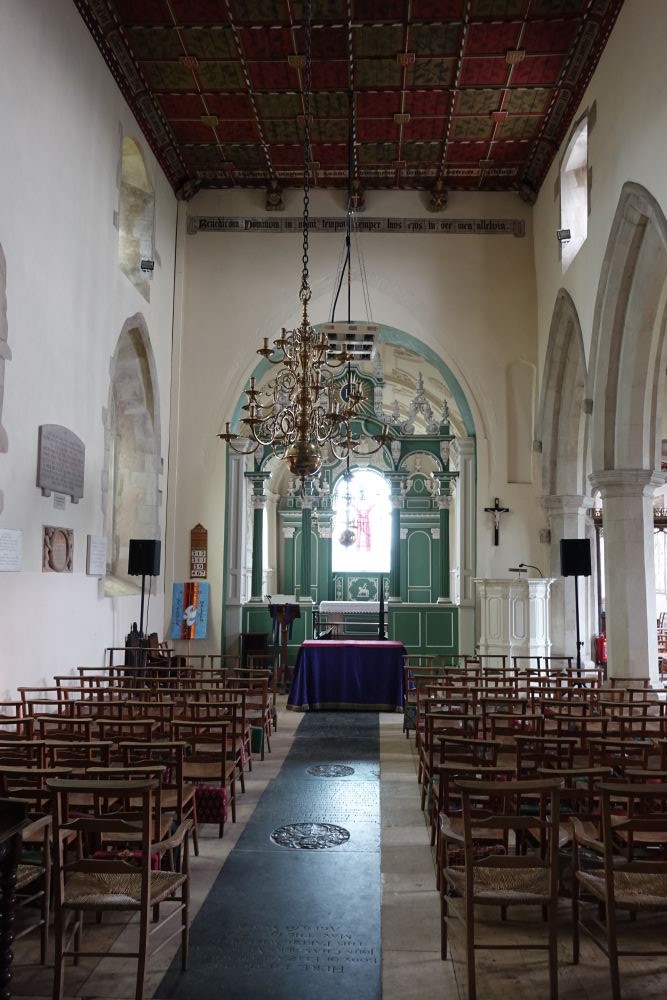
All Saint’s Church in St. Paul’s Walden Village, Hertfordshire, stands in for Highbury’s local church. If I were among the parishioners, I would have asked to keep the beautiful pale green painted box pews from the film that replaced the brown chairs.
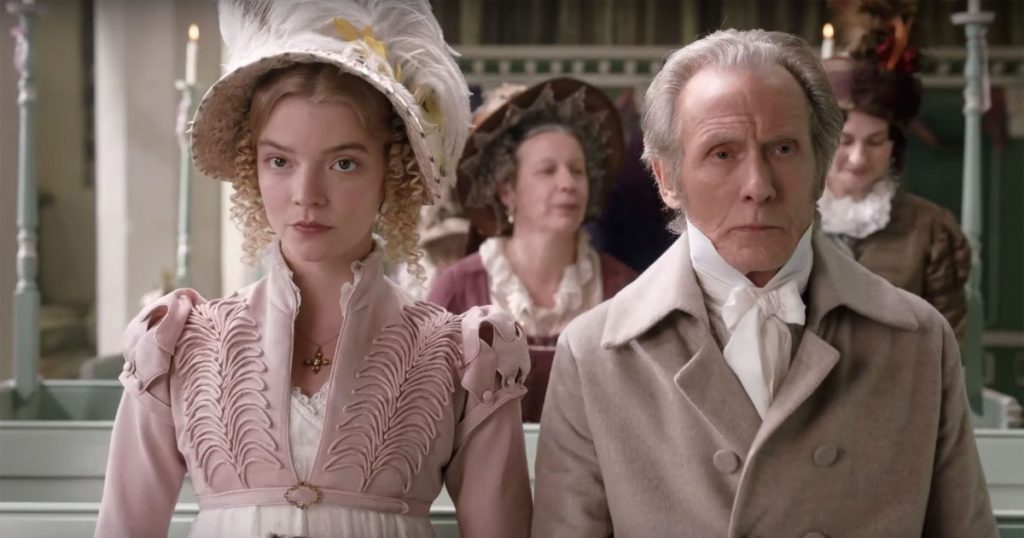
There’s so much visual beauty in Emma and I haven’t even touched on the costumes. The very first line of the novel and that is also notated on screen at the beginning of the film says, “Emma Woodhouse, handsome, clever, and rich, with a comfortable home and happy disposition, seemed to unite some of the best blessings of existence; and had lived nearly twenty-one years in the world with very little to distress or vex her.” This is the first version of Emma that truly shows her wealth in her clothing, hats, gloves, and jewelry. And don’t even get me started on Bill Nighy. He’s plays the absolute best version of her nervous, hypocondriac father Mr. Woodhouse.
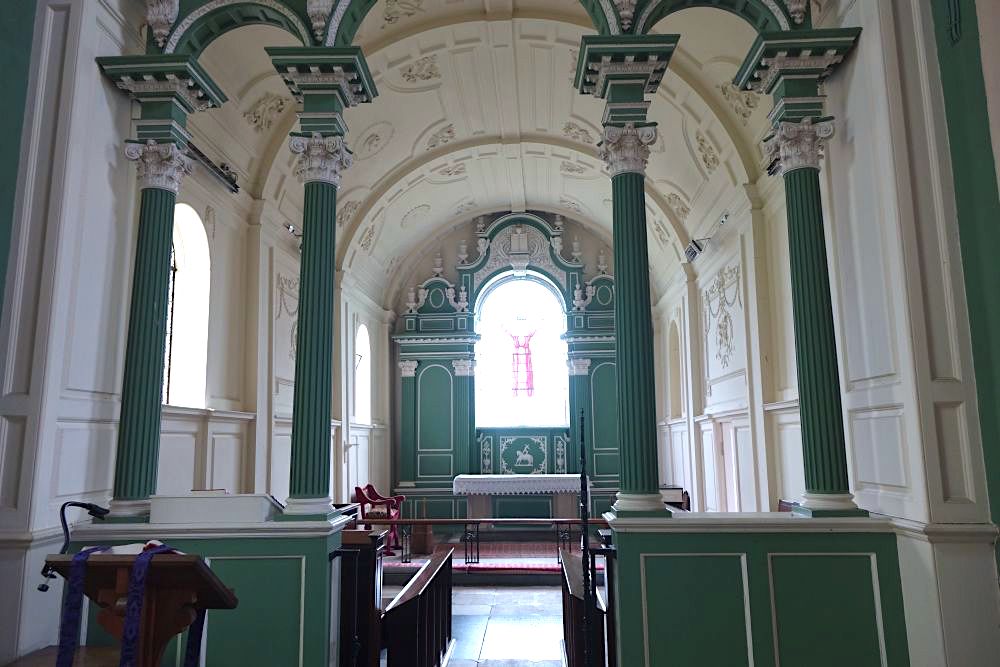
Autumn de Wilde told Jonah Hill in the Free the Work podcast that the Georgian and Regency period was how you showed your wealth. There are a lot of period movies with no color because what we see now has been faded and antiqued. In Emma, what they have is new so it’s brighter and more colorful. The green of this church was original and not painted for the movie and it fits so perfectly with the pastry shop colors of this version Autumn de Wilde’s impeccable vision.
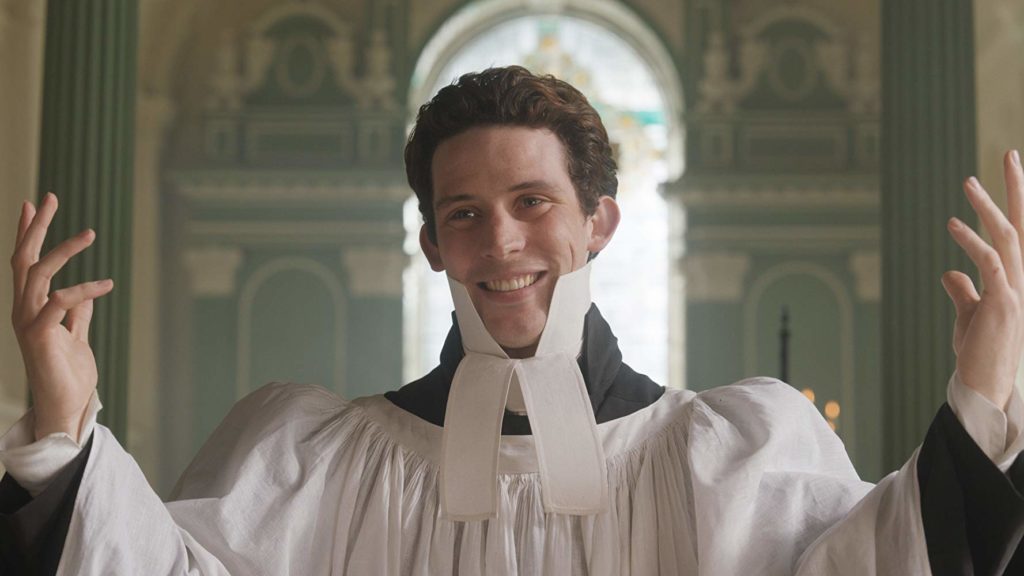
Josh O’Connor as Mr. Elton steals many scenes in the film and broke up some of the actors during the filming. Anya Taylor-Joy said, “I did have problems with Josh O’Connor at the beginning because I just couldn’t hold it together. He’s the only person I’ve ever worked with who makes me break character. I really had to take myself away and be like, Anya, don’t %#$& this up right now, you need to keep it together!“
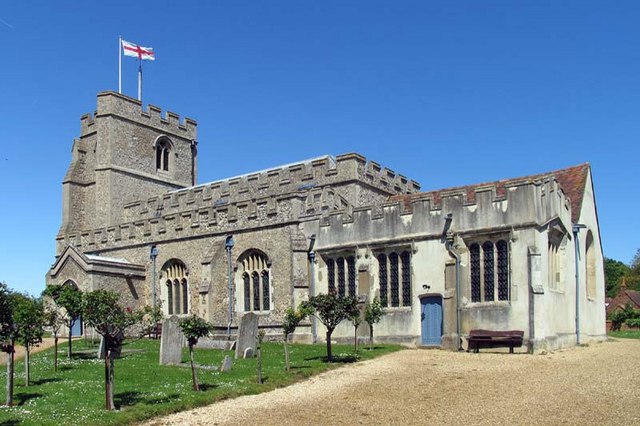
I’ve always wanted to marry an intelligent, self-deprecating Englishman with floppy hair and if that ever happens, I want it to be at All Saint’s Church in St. Paul’s Walden Village in Hertfordshire.
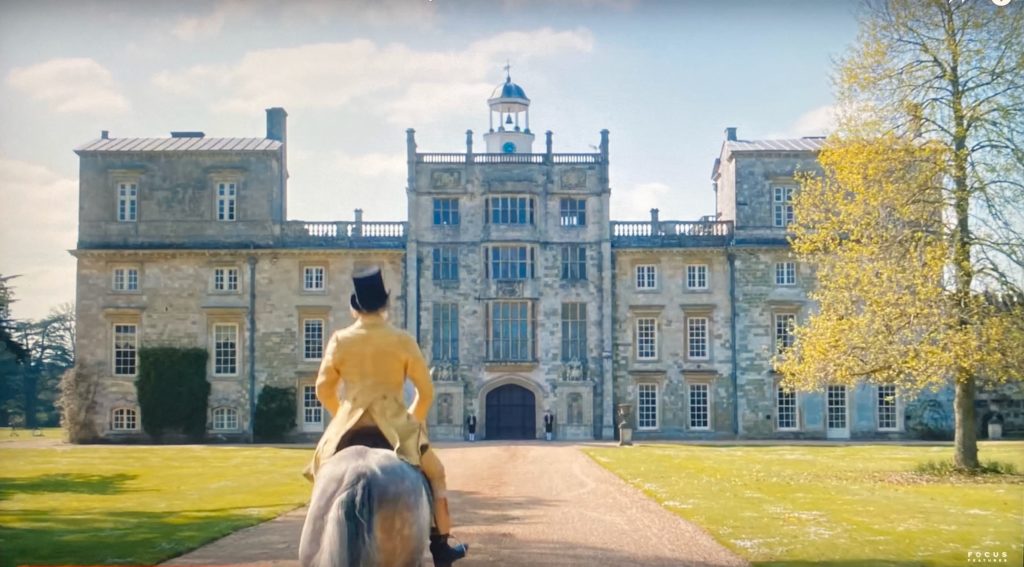
In Emma, George Knightly is the oldest son so he is the master of Donwell Abbey and lives there alone since his younger brother, John Knightley, has married Emma’s sister and moved to London.
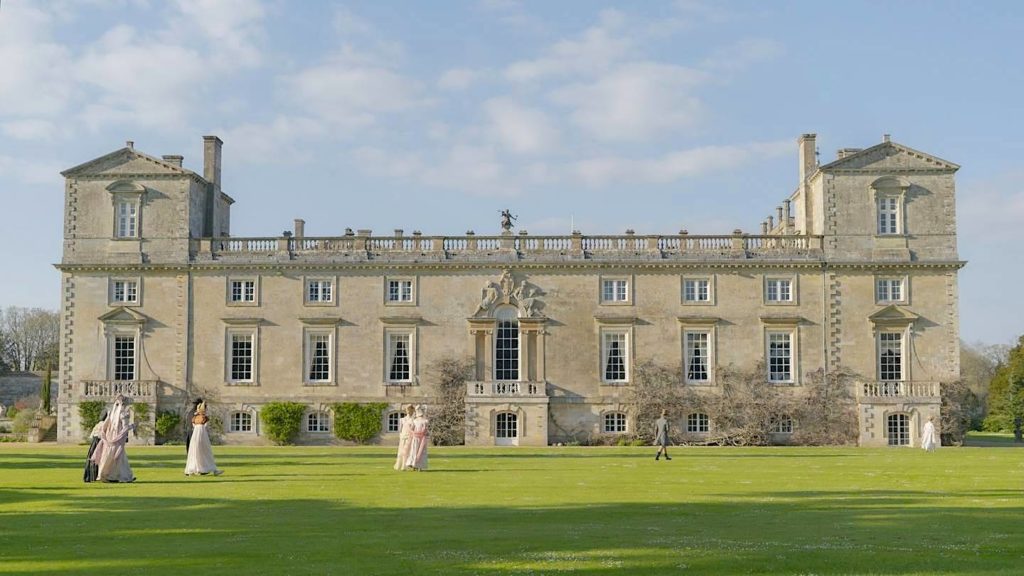
Wilton House is the location that stand in for Donwell Abbey.
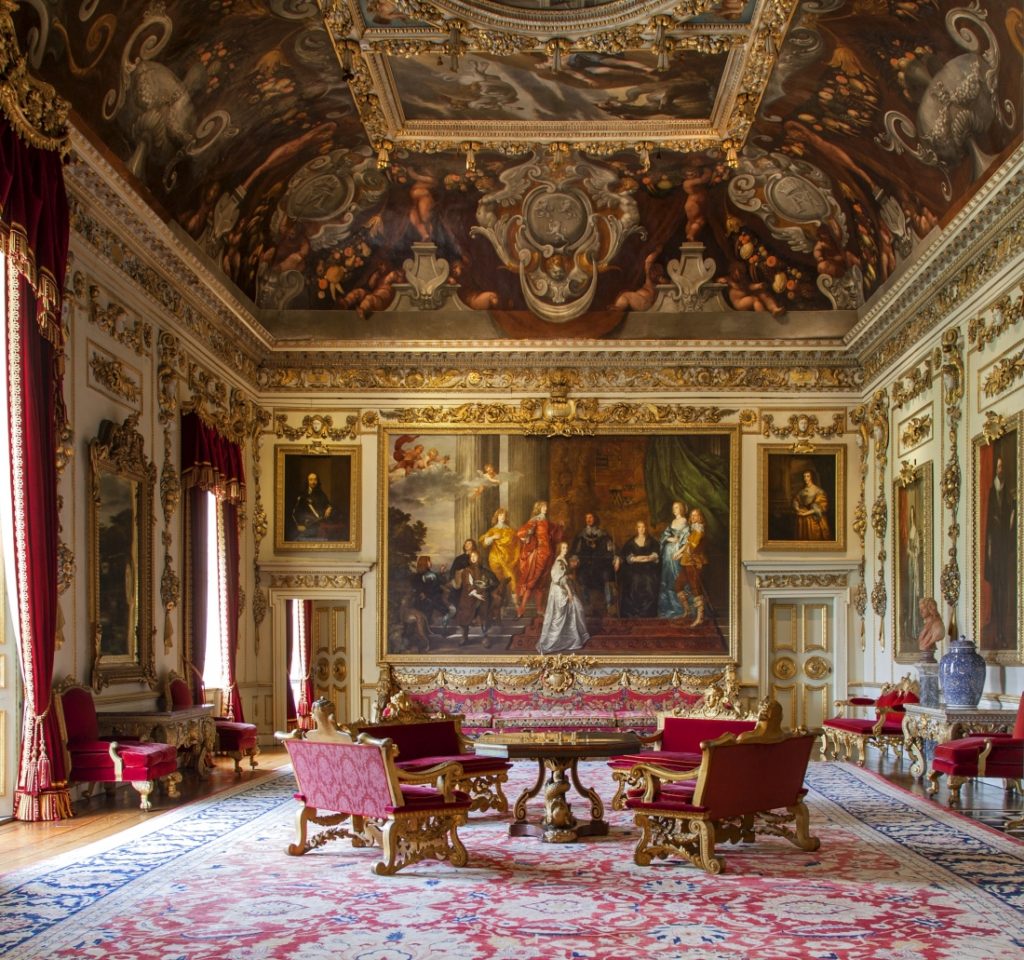
Wilton House often stands in for Buckingham Palace and has been seen in The Crown and Young Victoria and you can see why in this photo.
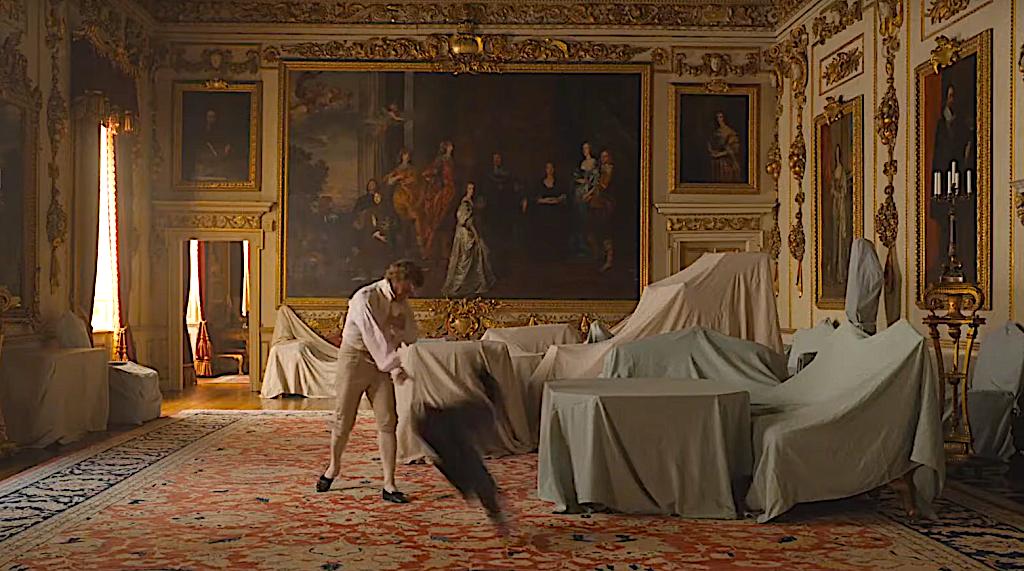
Autumn de Wilde told me that they weren’t allowed to make any changes to Wilton House so they covered some of the furniture to indicate that Mr. Knightley lives in a smaller section of Donwell Abbey.
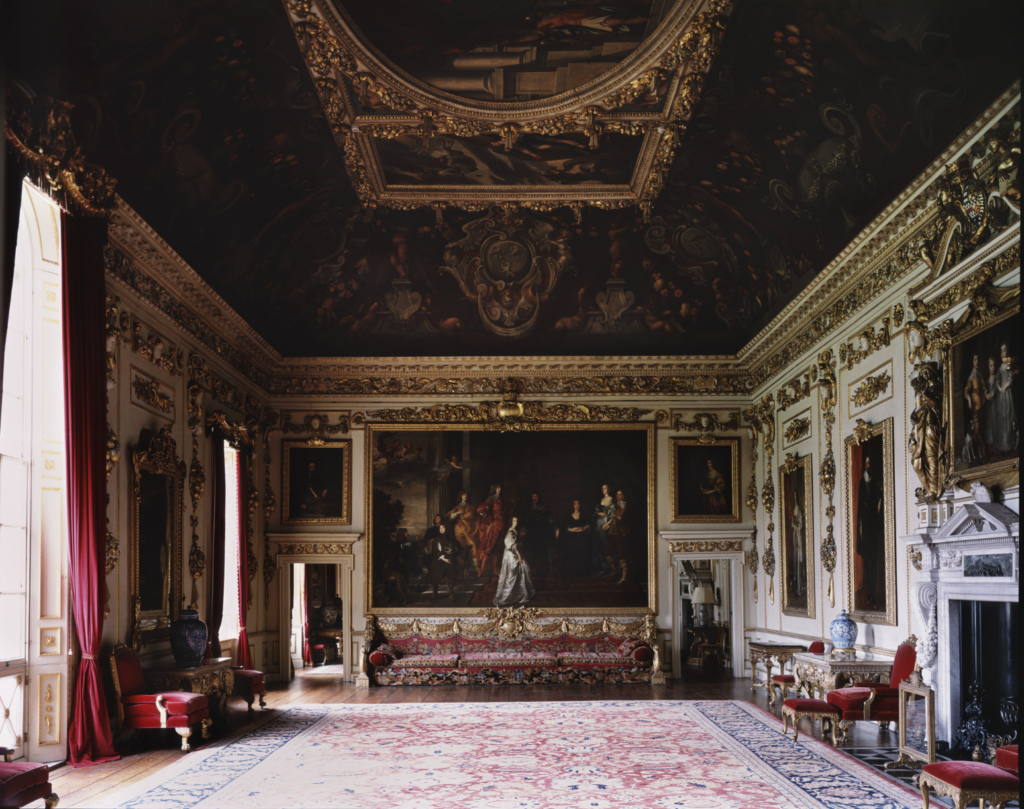
Wilton House has also appeared in other movies like the 2005 version of Pride & Prejudice which is an abomination of a film in my opinion. I told director Autumn de Wilde that she should make an adaptation of all the Jane Austen novels. I would die to see how she and the screenwriter of Emma, Eleanor Catton, would interpret each book.
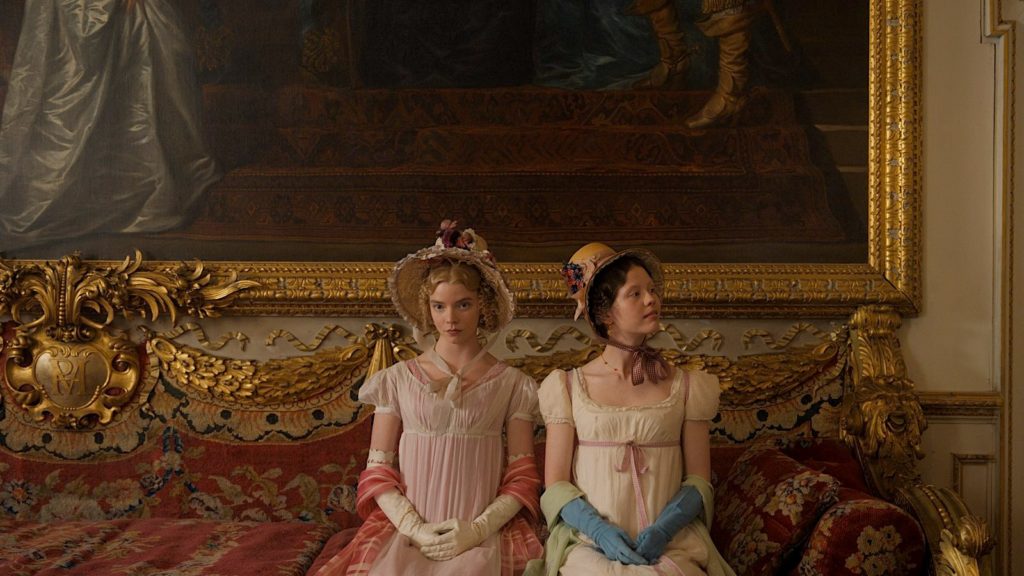
Emma and Harriet taking in the art at Donwell Abbey.
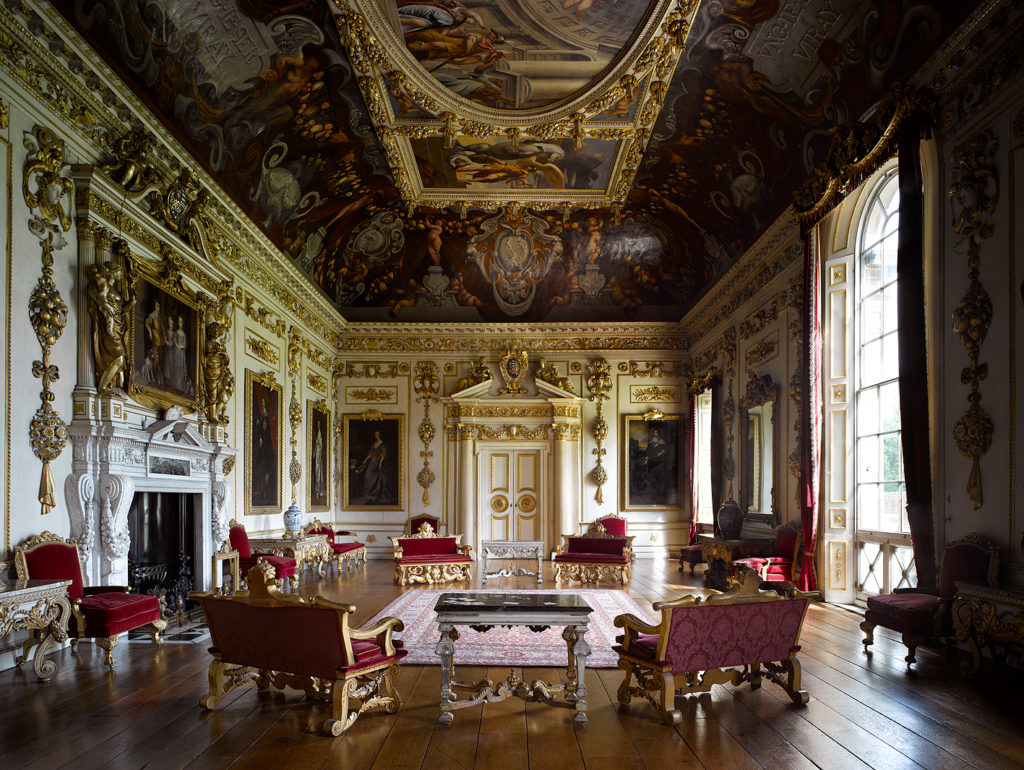
Another look at Wilton House.
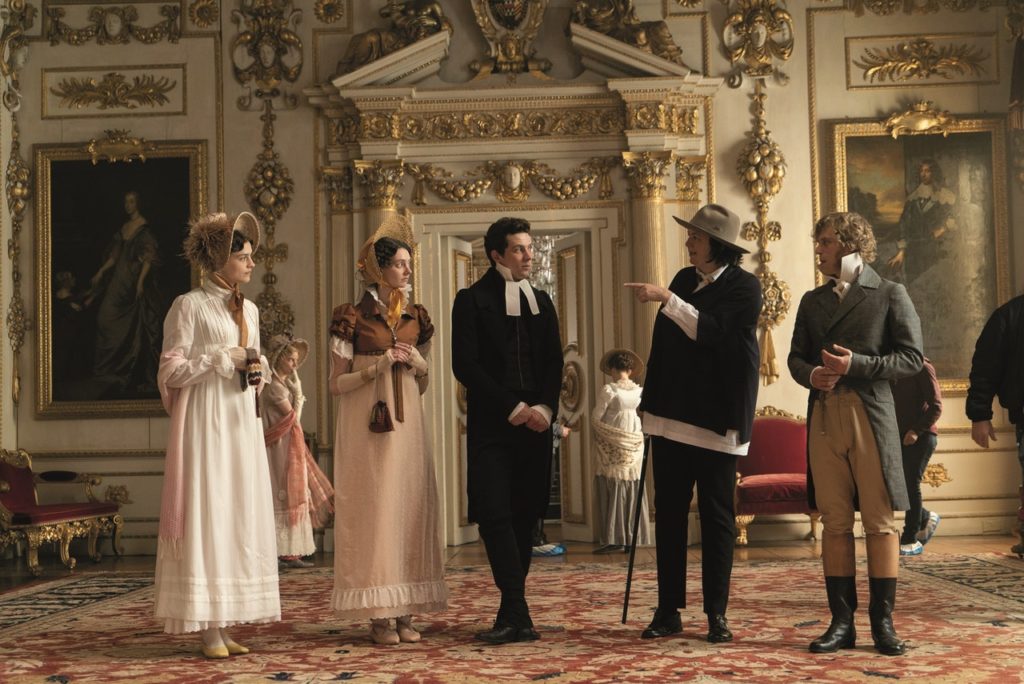
A scene from filming that includes director Autumn de Wilde with the cane. She has had a long career as a photographer of musicians and as a music video director. This is the first feature film she has directed because as we all know, it’s hard for women to get directing jobs and recognition even when they do as we saw from this year’s Academy Awards. She also studied acting early on so she understand every aspect of making a film.
One of the things I really noticed about this version of Emma is the manners of each character are much more authentic than previous versions. Notice the way that actor Johnny Flynn who plays Mr. Knightly on the far right is holding his hands and playing with his signet ring even while not filming? The female actors are doing it too. The actors had a rehearsal with the etiquette to get comfortable with it so it wasn’t a brand new thing that interfered with their acting. Autumn de Wilde also said that she asked the actors to go with her plan to embrace the etiquette because it’s the only way to poke fun at it and if they only go half way and get palsy and handsy with one another, there is no way to create an amazing sensuality with just fingertips touching. If you watch the other versions of Emma, you will pick up on their casualness.
I almost forgot to mention that Autumn de Wilde photographed all the actors for the marketing posters and added the period after the word Emma because the movie a period piece. I appreciate that every aspect of Emma was thought out from start to finish.
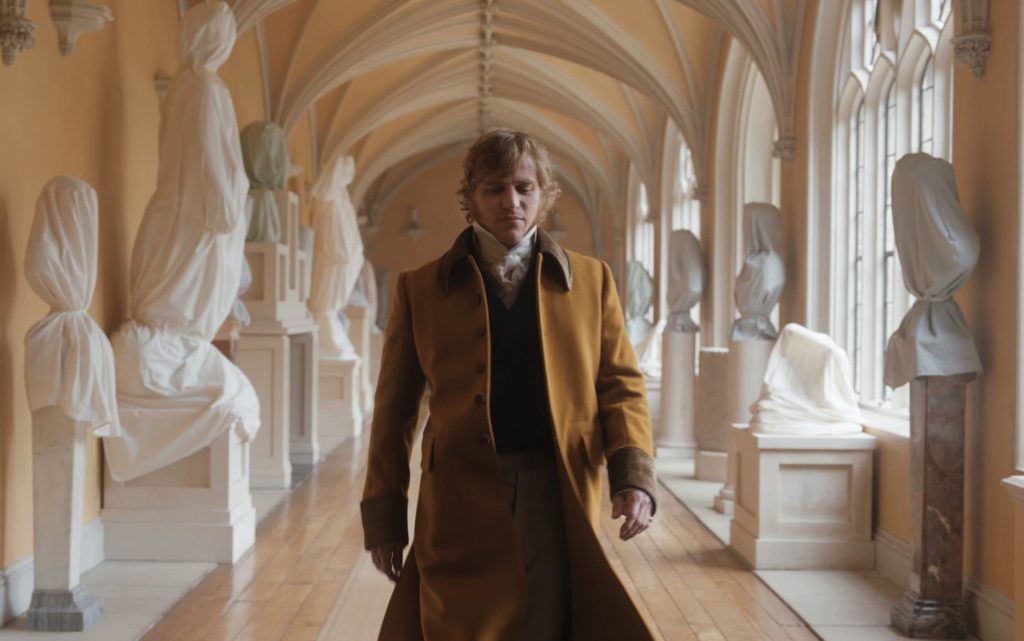
Another look at Mr. Knightley walking the cloister hall of Donwell Abbey. Of his character, Autumn de Wilde said that “in him, she saw When Harry Met Sally; Reality Bites; every cop show where the female and the male police officers argue all the time, but really, they love each other.”

James Wyatt’s Gothic revival cloister hall at Wilton House displays the 8th Earl of Pembroke’s collection of statuary assembled between 1690 and 1730.
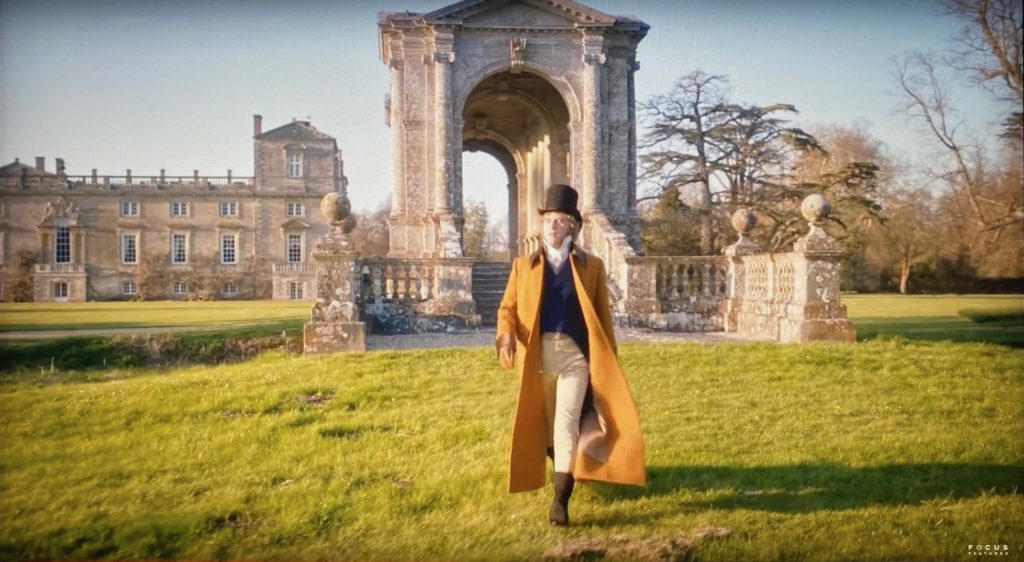
One of the things that Emma hates about Mr. Knightley is that he walks which is not gentlemanly. He should take a carriage but he likes his walks to Hartfield where he spends most evenings with Mr. Woodhouse and Emma. One of the things I didn’t remember that Mr. Knightley is 16 years older than Emma. I suppose that’s why he recognizes the bad character of some of the other men in the book and film and Emma does not. He’s had more life experience and she’s led a very sheltered like in Highbury. There’s also a lot more chemistry with this Mr. Knightley and Emma than in previous versions.
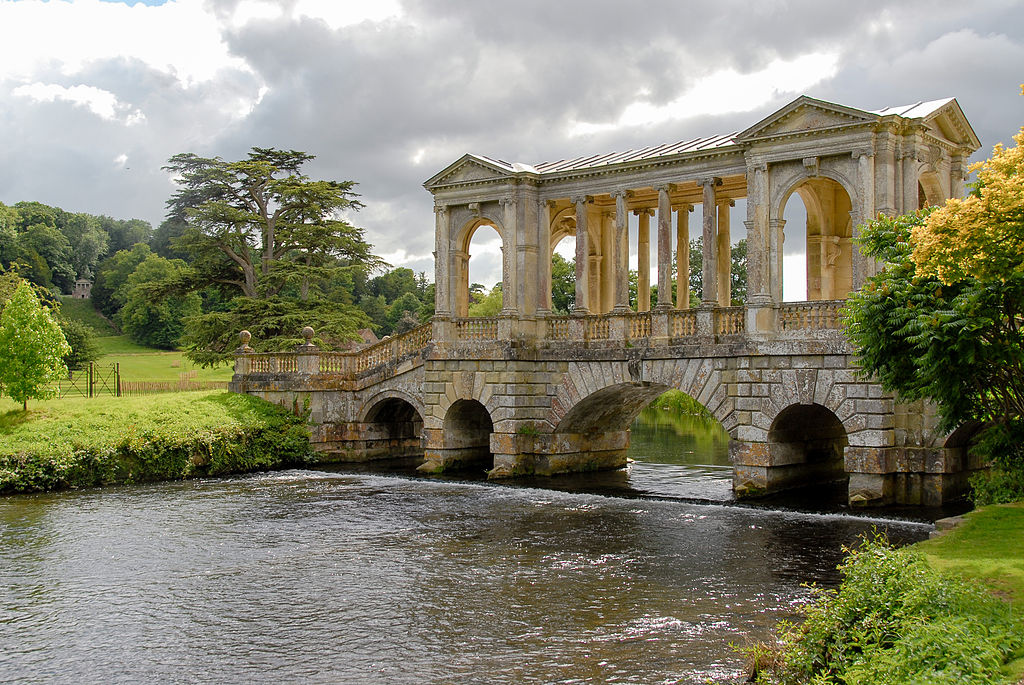
One of the most amazing parts of Wilton House is the Palladian Bridge built in 1736 that still stands.

The characters of Emma enjoy the law of Donwell Abbey.
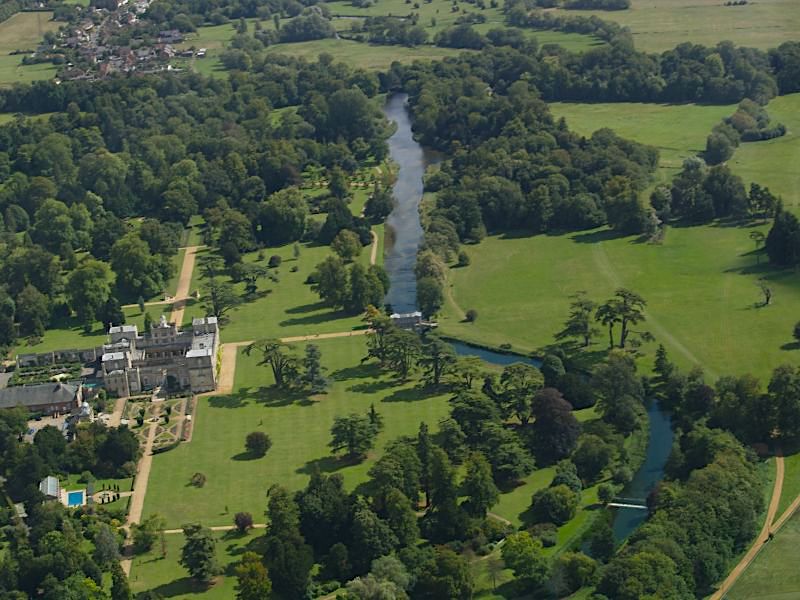
An aerial view of Wilton House.
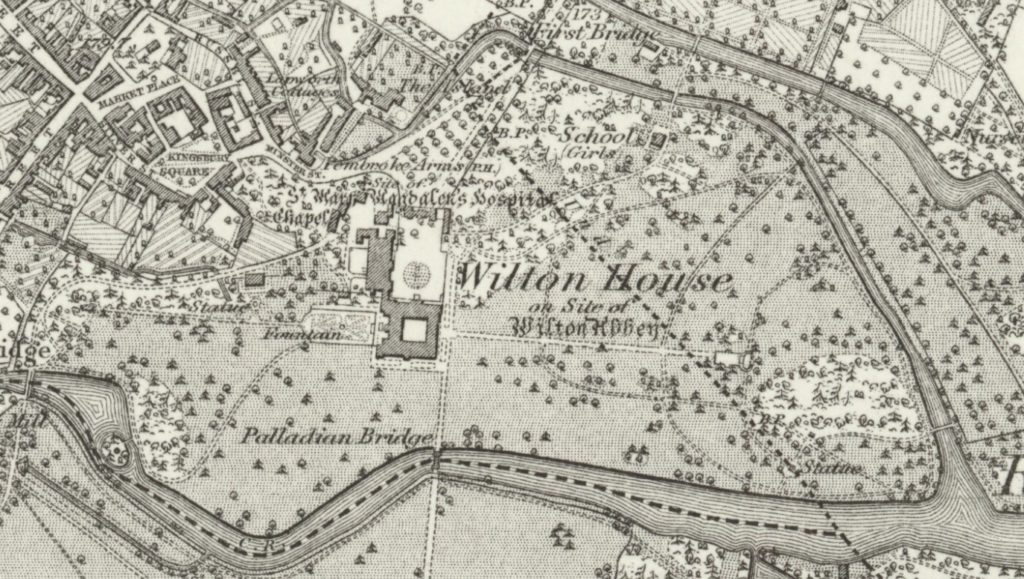
An antique map of the Wilton House property from 1887.
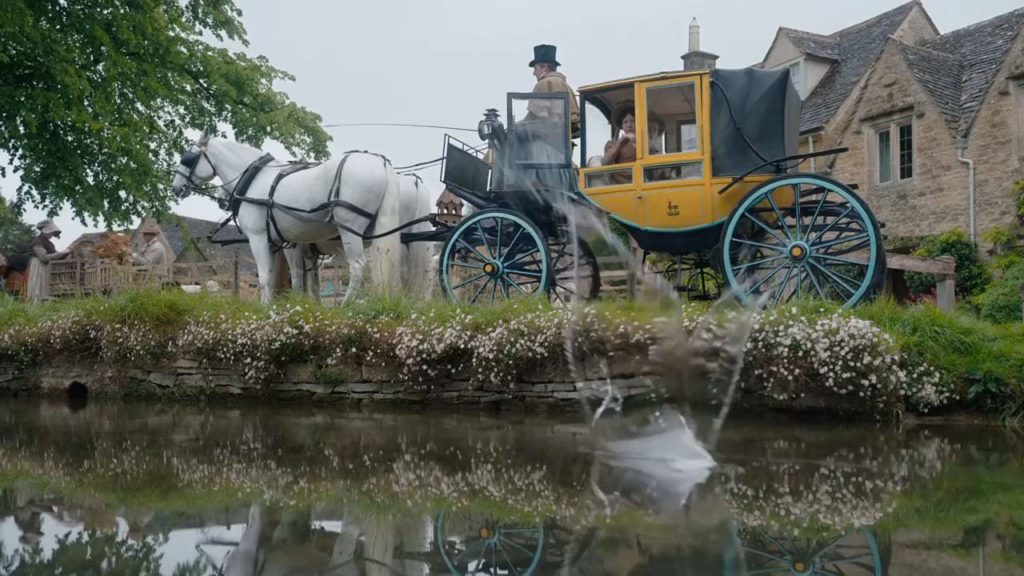
A view of the village of Highbury in the film with Emma’s carriage.
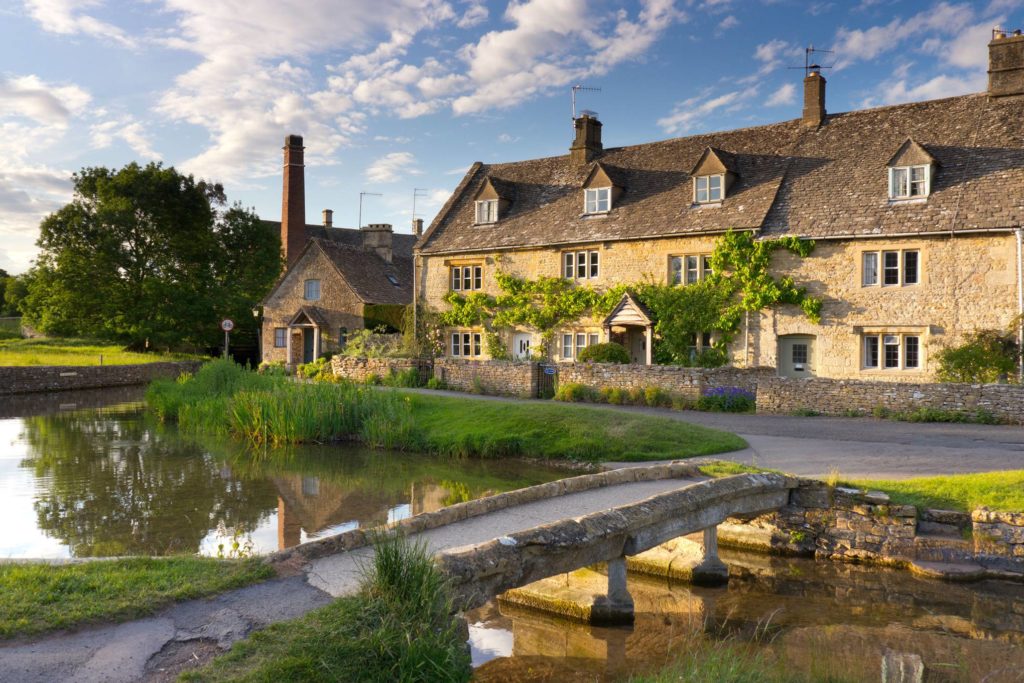
Lower Slaughter, a village in the Cotswolds, stands in for Highbury.

Many scenes take place in the. Haberdashery in Highbury and we often see the students of Mrs. Goddard’s school walking through town in their red capes.
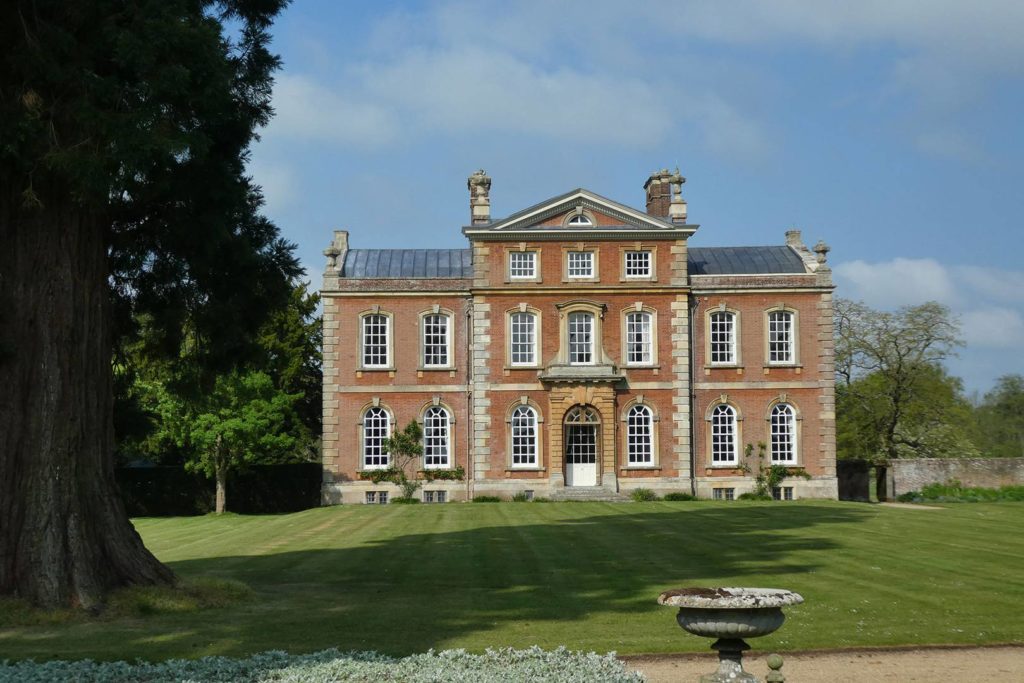
Kingston Bagpuize House in Abingdon, Oxfordshire, was the location for Mrs. Goddard’s school.
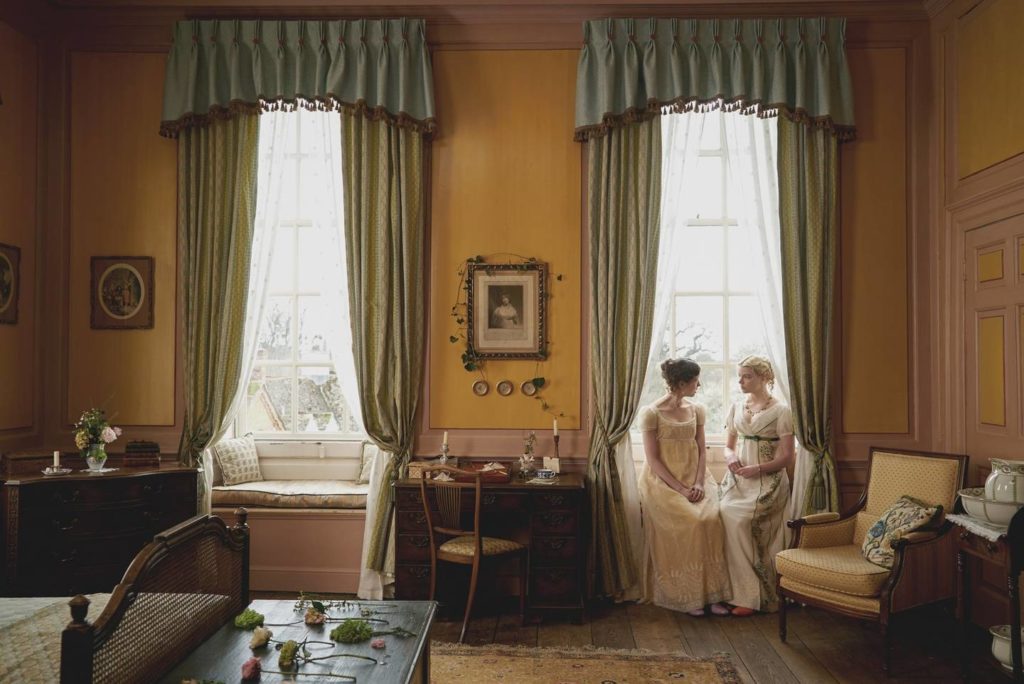
Harriet Smith’s room Mrs. Goddard’s school.
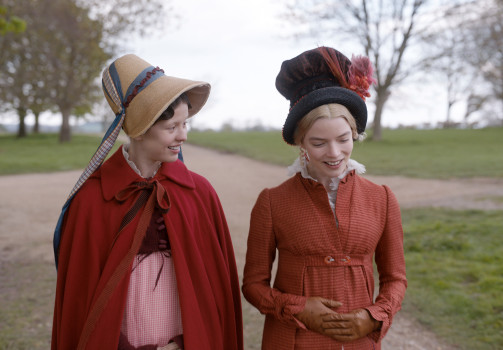
They really couldn’t have filmed Emma any where else but England because then you wouldn’t have the wonderful landscape and changeable sky that you see when the characters are outside. The wind also blows the women’s dresses in this Georgian and Regency periods show off their figures which is a bit sexier than in earlier periods.
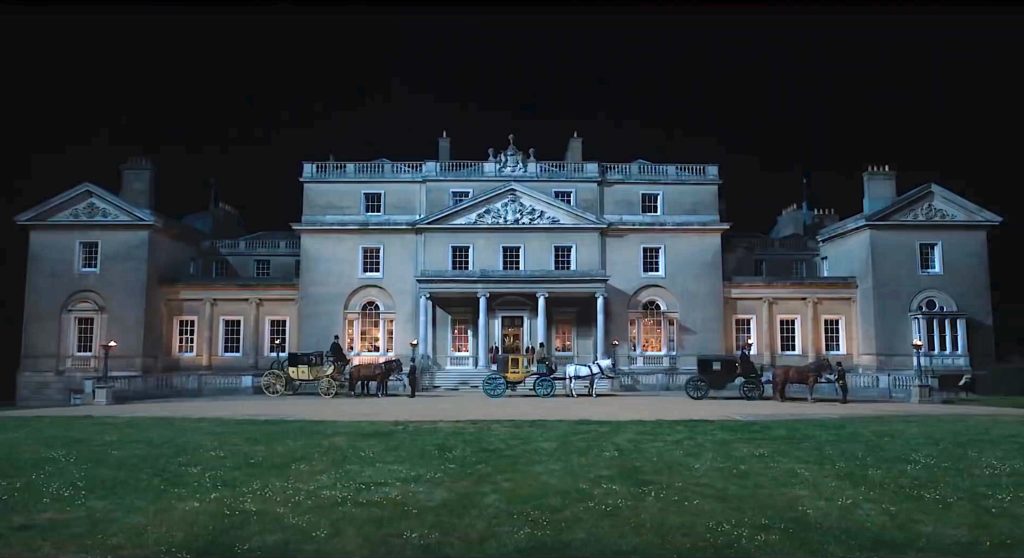
I’m really disappointed with myself for not recognizing that Wrotham Park which is the location for the Cole’s party was also seen in Gosford Park. This image of the carriages lined up outside is one of the most beautiful scenes.

I don’t know that any other director than Autumn de Wilde and her music background would have cast actors who can actually sing and play music as beautifully as those in her version of Emma. Johnny Flynn who plays Mr. Knightley can actually play the violin and sing because he’s a musician in real life. He also wrote the song at the end of the film when the credits roll, Queen Bee, as perhaps something Mr. Knighley would write for Emma. Amber Anderson who plays Miss Jane Fairfax is also an accomplished pianist which really punctuates her scenes. And if that wasn’t enough, Isobel Waller-Bridge, sister of Phoebe Waller-Bridge, was the composer on the film. I downloaded the Emma soundtrack as well which further prove how much I love this film.

Leith Hill, Dorking, Surrey, stands in for Box Hill, the famous picnic scene location from the novel and film.
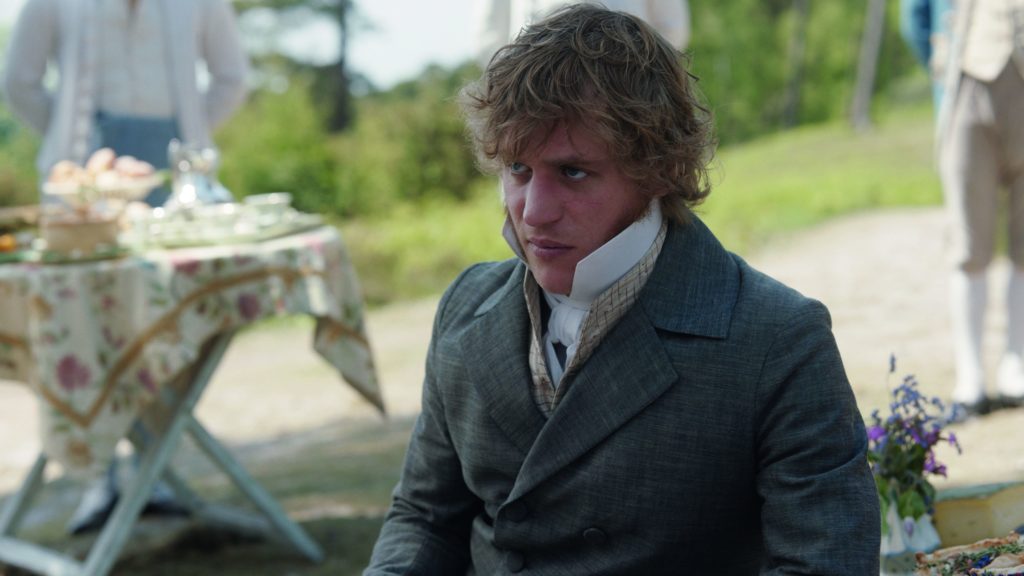
Mr. Knightley at the picnic at Box Hill. Autumn de Wild said in W magazine, “Jane Austin wrote such incredible characters, male and female; she was a very astute observer of the human condition and relationships between men and women and desires.”
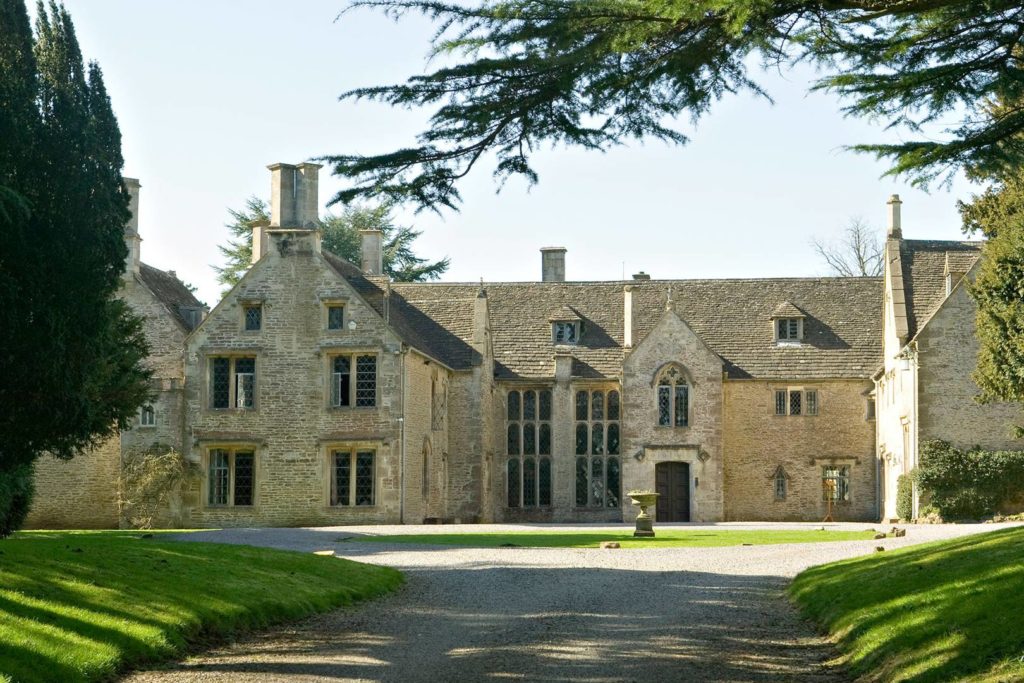
Chavenage House in Tetbury, Gloucestershire, which stands in for Randalls, the home of Mr. and Mrs. Weston.
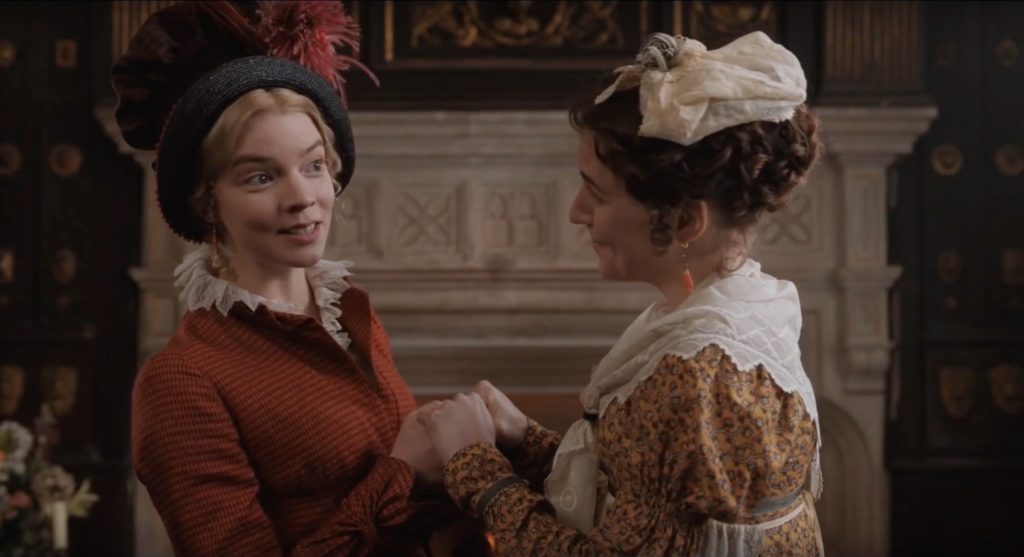
The house sits just a half a mile from Harfield so Emma often visits Mrs. Weston.
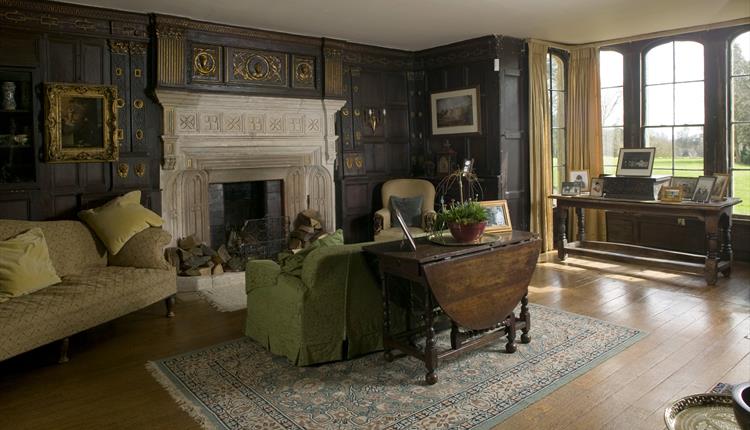
You may recognize Chavenage House since it’s also home to the Poldark Family.

The dining room of Randalls which is the setting for the amusing Christmas Eve dinner party. “The Georgians really were quite spectacular with their displays of food,” says Fox. “A lot of it is about pomp and showing off just how big your cake is or how outrageously colourful your jellies are. We had great fun working with the food stylist coming up with different ideas.”

When I went to see Emma the second time, I thought I recognized the tapestries in this bedroom at Chavenage House.
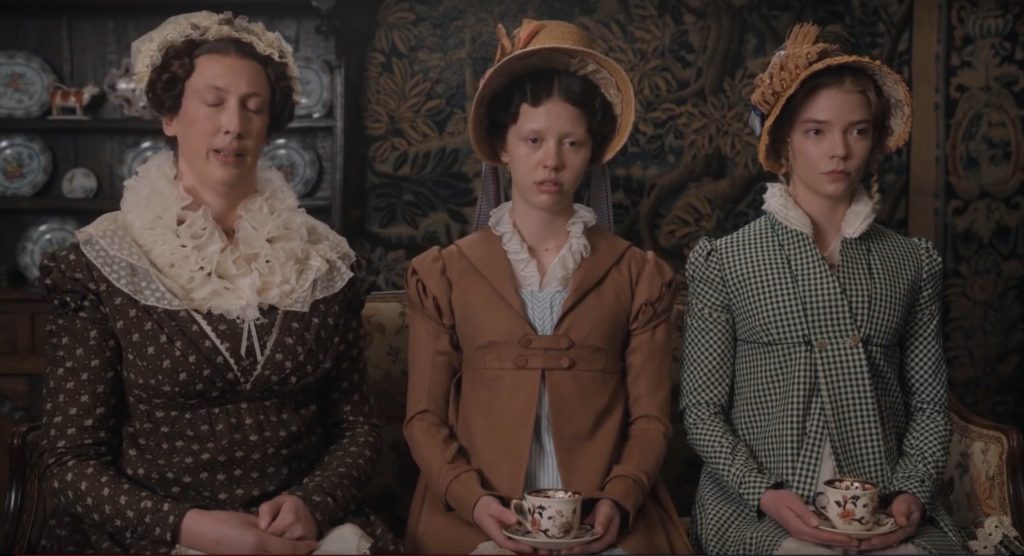
The upstairs of Chavenage House is also used for the home of Mrs. Bates and Miss Bates and where Miss Jane Fairfax stays in Highbury.

“I wanted to point a finger—as Jane Austen did—at the rigid class system that existed in that particular time and place of the Regency period in England,” Autumn de Wilde says in W magazine. ”My goal was to humanize the story, not to modernize it. All the characters in Emma are very limited in their worldview and bound by their class position. Jane Austen wrote an astute satire about the insular world that her characters inhabit and the snobbery that bound people to their inherited class. This was the type of adaptation, perhaps a time-travel approach, that I set out to make. However, this is such a universal story about human behavior and relationships that it could transfer to many other settings where there is a comparable imbalance of power—American high school being a great example. This is why Clueless is so brilliant. Like Shakespeare, there are no limits to how many interpretations of Jane Austen’s stories should be made.”

Emma is playing now in New York and Los Angeles. It will roll out to more cities on February 28 and to wide release on March 6. Run, don’t walk, when, when it comes to your town. I know you will love it.
from Habitually Chic®
No comments:
Post a Comment